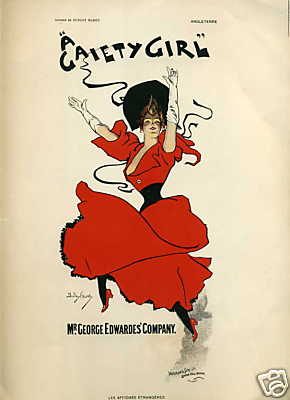Musical theatre
Musical theatre is a form of theatrical performance that combines songs, spoken dialogue, acting, and dance. The story and emotional content of a musical – humor, pathos, love, anger – are communicated through the words, music, movement, and technical aspects of the entertainment as an integrated whole. Although musical theatre overlaps with other theatrical forms like opera and dance, it may be distinguished by the equal importance given to the music as compared with the dialogue, movement, and other elements.
History[edit | edit source]
Musical theatre as a genre has evolved significantly over the years, with its roots traceable to the early 20th century. It began with operetta, a genre of light opera, offering an amusing and less formal alternative to opera. Early examples include the works of Gilbert and Sullivan in England and those of Franz Lehár in Vienna. However, the modern form of musical theatre is most closely associated with the Broadway district of New York City, where it has flourished and become a major global influence.
The Golden Age of Broadway (1940s to 1960s) saw the creation of many of the genre's most iconic shows, such as Oklahoma!, West Side Story, and The Sound of Music. These works were characterized by their sophisticated integration of music, dance, and plot, and by the significant contributions of composers and lyricists like Richard Rodgers, Oscar Hammerstein II, and Stephen Sondheim.
Elements[edit | edit source]
Musical theatre productions are built around a script known as a book. The book of a musical integrates the musical numbers (songs, instrumental pieces, and dances) into a coherent narrative. Key elements include:
- Music: The score of a musical includes melodies sung by the characters and orchestral parts that underscore the action. Composers like Andrew Lloyd Webber and Leonard Bernstein have been instrumental in shaping the sound of modern musical theatre.
- Lyrics: The words sung by the characters, which are crucial for advancing the plot and developing characters. Lyricists such as Stephen Sondheim and Lorenz Hart are celebrated for their witty and poignant contributions.
- Book: The spoken dialogue and story structure. Unlike in opera, the book is a critical component of a musical, providing the framework within which songs and dances fit.
- Choreography: Dance sequences that range from simple movements to complex routines, contributing to the storytelling and emotional expression.
Production[edit | edit source]
Producing a musical involves collaboration among a wide range of artists and technicians. Key roles include the director, who oversees the creative vision; the choreographer, who designs the dance sequences; the musical director, who supervises the musical aspects; and the set designer, costume designer, and lighting designer, who create the visual world of the show.
Influence and Global Reach[edit | edit source]
Musical theatre has had a significant cultural impact, influencing popular culture, music, and film. Shows like Hamilton have achieved both critical acclaim and commercial success, demonstrating the genre's ability to adapt and remain relevant. Moreover, the global spread of musical theatre has led to the production of shows in countries around the world, adapting and incorporating local traditions and themes.
See Also[edit | edit source]
Navigation: Wellness - Encyclopedia - Health topics - Disease Index - Drugs - World Directory - Gray's Anatomy - Keto diet - Recipes
Search WikiMD
Ad.Tired of being Overweight? Try W8MD's physician weight loss program.
Semaglutide (Ozempic / Wegovy and Tirzepatide (Mounjaro / Zepbound) available.
Advertise on WikiMD
WikiMD is not a substitute for professional medical advice. See full disclaimer.
Credits:Most images are courtesy of Wikimedia commons, and templates Wikipedia, licensed under CC BY SA or similar.Contributors: Prab R. Tumpati, MD





